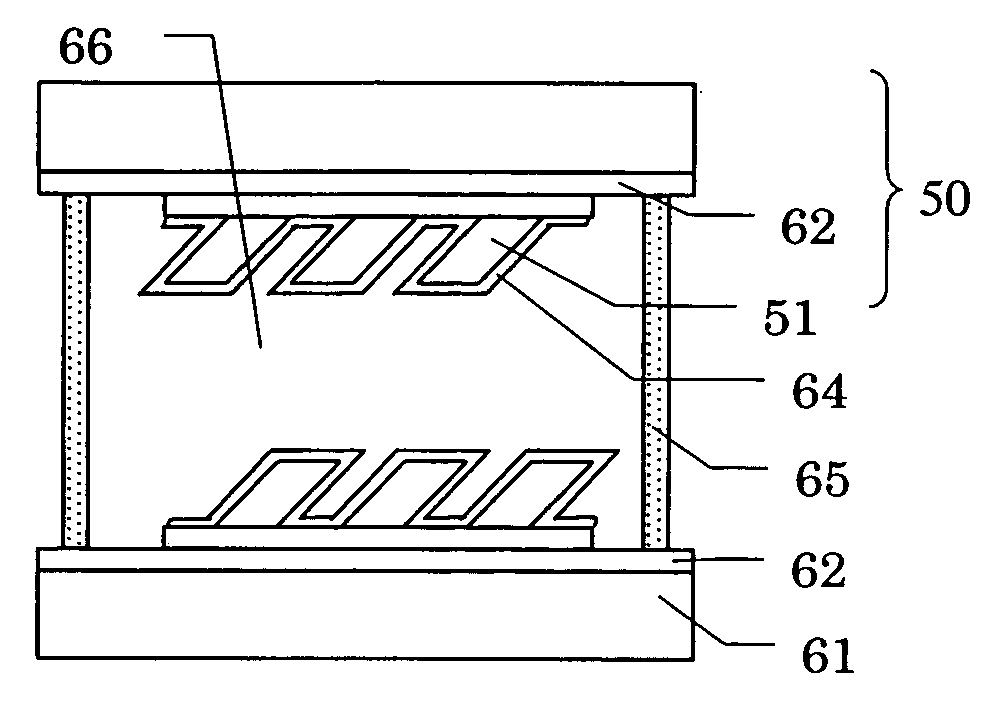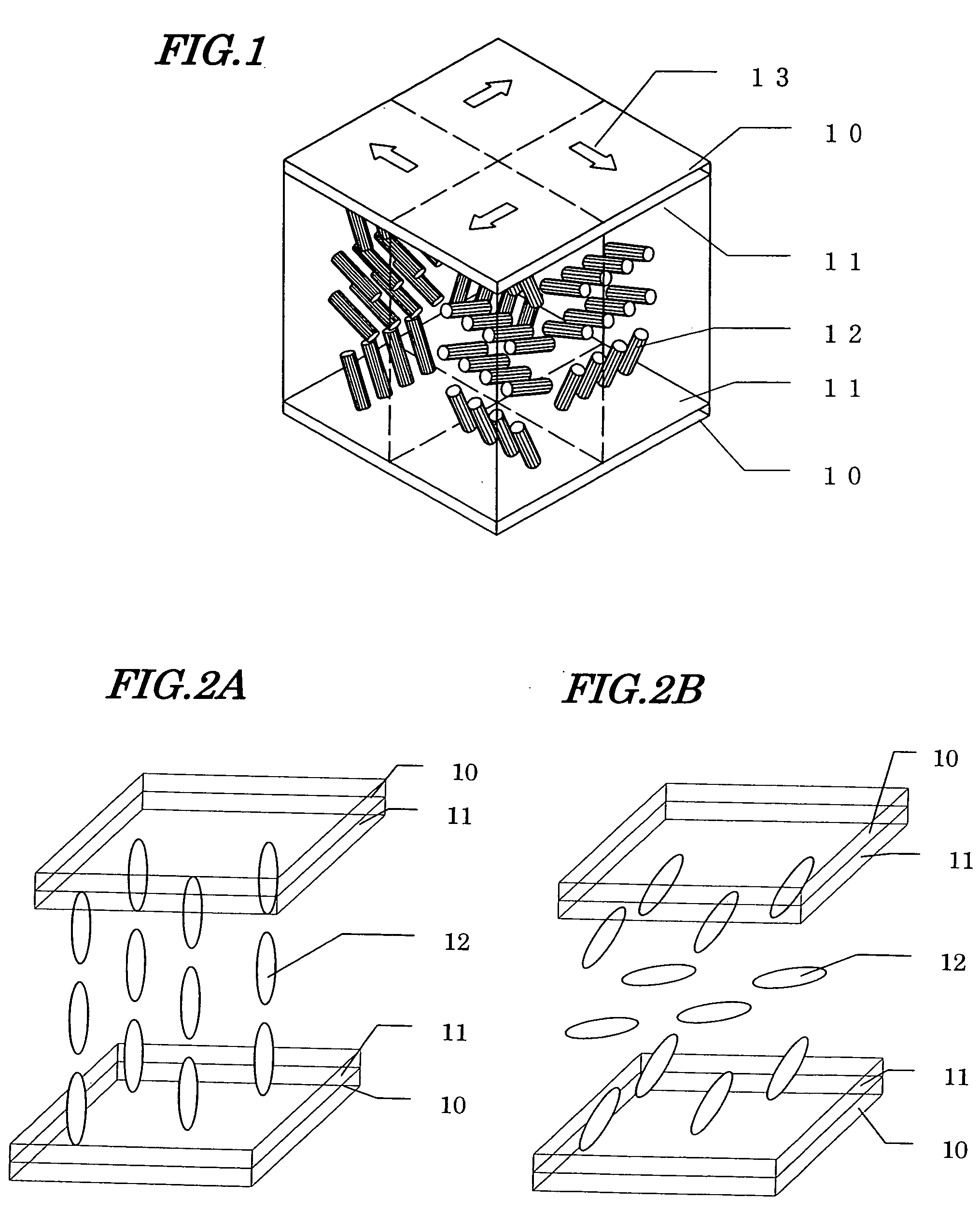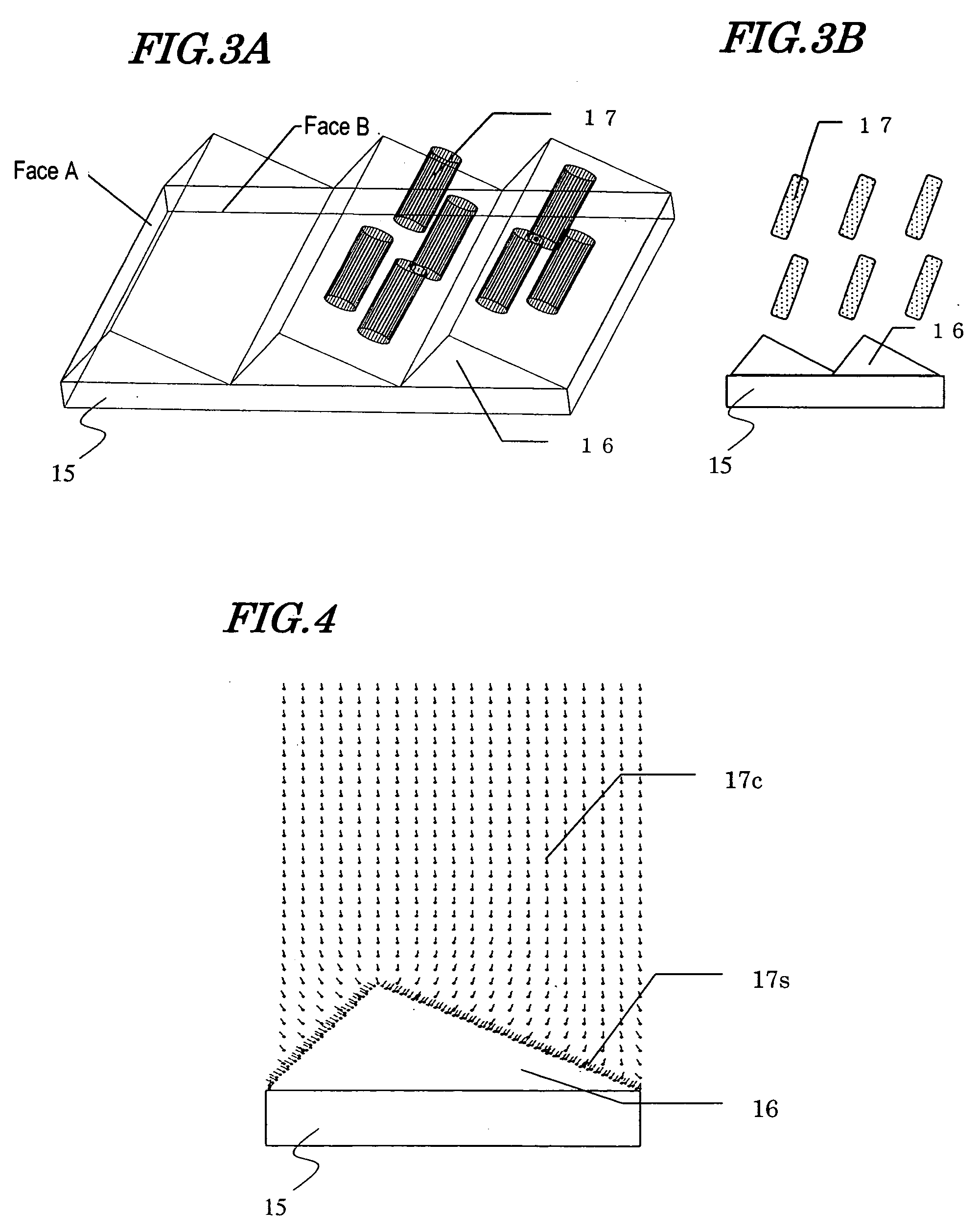Liquid crystal display device and method for producing the same
- Summary
- Abstract
- Description
- Claims
- Application Information
AI Technical Summary
Benefits of technology
Problems solved by technology
Method used
Image
Examples
embodiment 1
[0153] Hereinafter, the structure of a liquid crystal display device according to Embodiment 1 of the present invention will be described with reference to the accompanying drawings.
[0154]FIGS. 11A and 11B are schematic cross-sectional views illustrating exemplary structures of the liquid crystal display device of the present embodiment. The liquid crystal display device shown in FIG. 11A includes a pair of alignment controlling elements 50 attached together via spacers (thickness: 5 μm) 65, and a liquid crystal layer 66 interposed therebetween. The alignment controlling element 50 includes a glass substrate 61 and an electrode 62 formed on the glass substrate 61, with an alignment controlling structure being formed on the electrode 62. The alignment controlling structure includes an arrangement of a plurality of unit features 51. The unit features 51 are formed of, for example, a resin material. Each unit feature 51 has an asymmetric quadrangular cross section. In the alignment co...
embodiment 2
[0207] Hereinafter, a liquid crystal display device according to Embodiment 2 of the present invention will be described with reference to the accompanying drawings. The liquid crystal display device of the present embodiment has a similar structure to that of Embodiment 1 as described with reference to FIGS. 11A and 11B, except for the following difference.
[0208] The alignment controlling element employed in Embodiment 1 includes a plurality of unit features each having an asymmetric cross-sectional shape. Therefore, in Embodiment 1, disclinations are caused by confining liquid crystal alignment within certain regions or spaces, by utilizing ruggednesses consisting of unit features. On the other hand, the alignment controlling element of the present embodiment includes a plurality of columnar unit features each having side walls which are perpendicular to the substrate surface. By using such an alignment controlling element, as has been described above with reference to FIGS. 8C a...
embodiment 3
[0225] Hereinafter, a liquid crystal display device according to Embodiment 3 of the present invention will be described. The liquid crystal display device of the present embodiment has a similar structure to that of Embodiment 1 as described with reference to FIGS. 11A and 11B, except that the device of the present embodiment is an MVA mode liquid crystal display device employing an alignment controlling element which is divided into regions.
[0226] As described earlier, in order to improve the viewing angle in VAN mode, it is preferable that different pretilt directions exist within each pixel (MVA mode). According to the present invention, a pretilt direction can be arbitrarily set based on the ruggednesses on a surface which is in contact with the liquid crystal layer, and therefore MVA mode is relatively easy to realize.
[0227] An exemplary structure of the alignment controlling element of the present embodiment will be described with reference to FIGS. 17 and 18.
[0228] As sho...
PUM
| Property | Measurement | Unit |
|---|---|---|
| Length | aaaaa | aaaaa |
| Length | aaaaa | aaaaa |
| Angle | aaaaa | aaaaa |
Abstract
Description
Claims
Application Information
 Login to view more
Login to view more - R&D Engineer
- R&D Manager
- IP Professional
- Industry Leading Data Capabilities
- Powerful AI technology
- Patent DNA Extraction
Browse by: Latest US Patents, China's latest patents, Technical Efficacy Thesaurus, Application Domain, Technology Topic.
© 2024 PatSnap. All rights reserved.Legal|Privacy policy|Modern Slavery Act Transparency Statement|Sitemap



